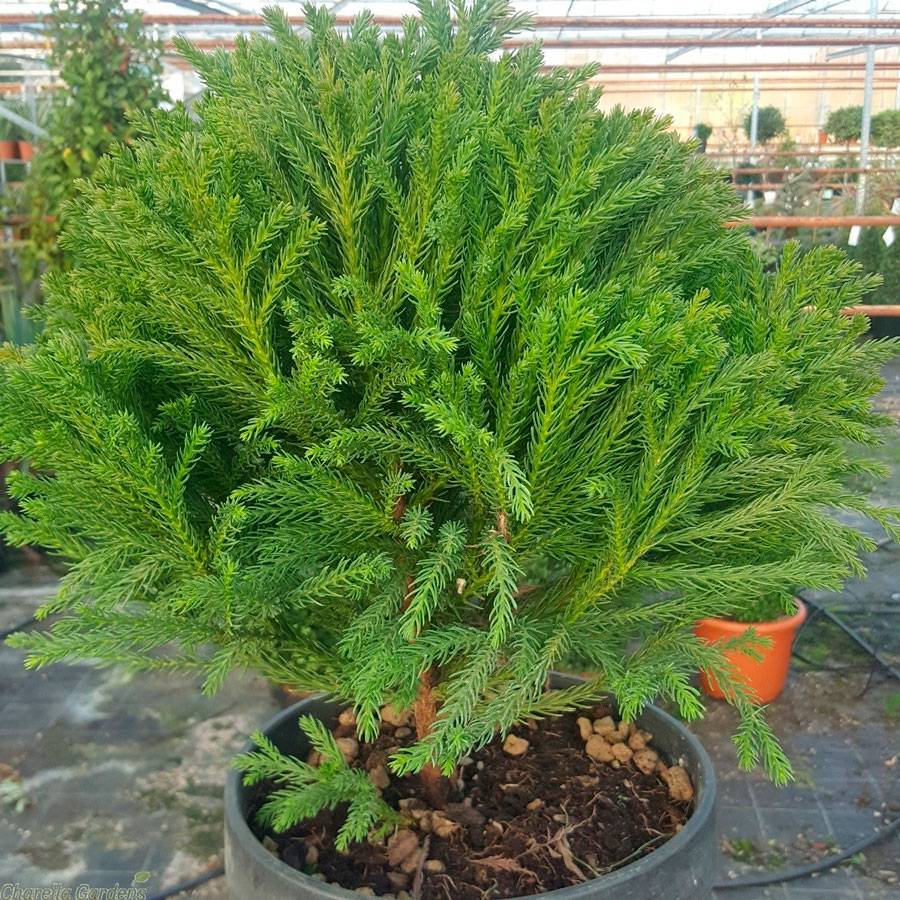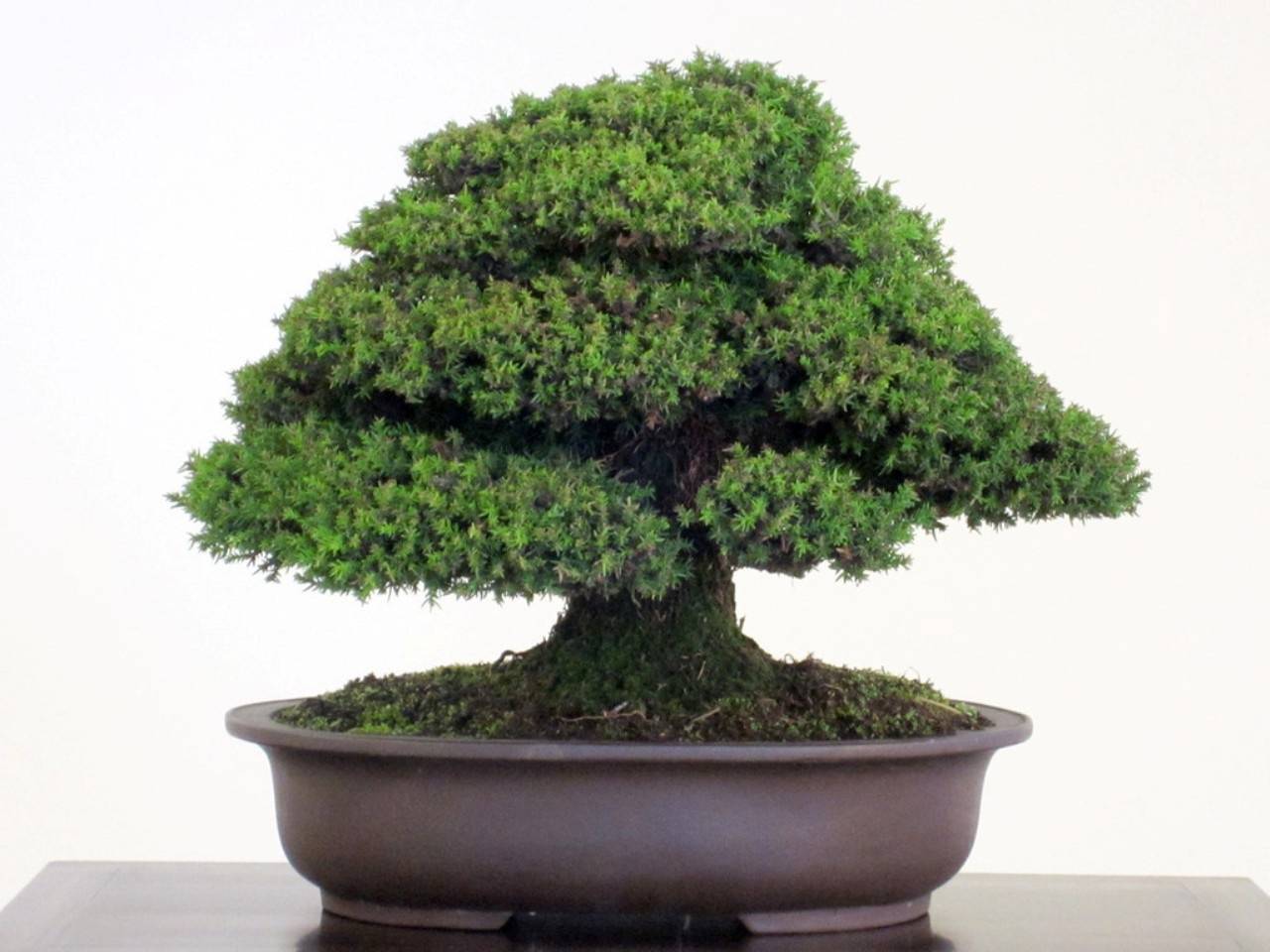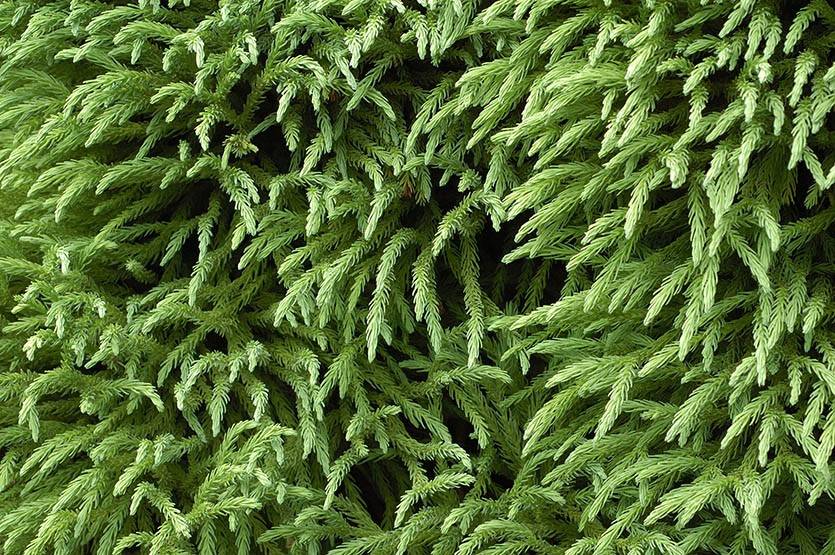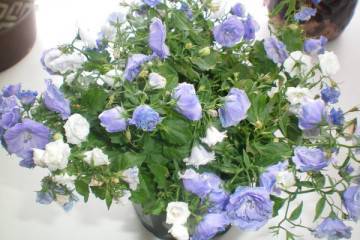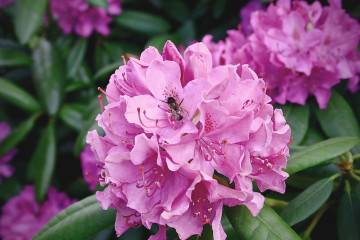Cryptomeria Japanese - indoor and outdoor cultivation
Content:
Cryptomeria is an evergreen tree of the Cypress family. She is often also called by the Japanese name Sugi. Valued as a unique garden and park tree. More than 20 different forms have been bred in Japan and Germany. Among them you can even find those that are grown at home.
What does Japanese cryptomeria look like?
You can endlessly admire the plant. In the latitudes of Russia, Japanese cryptomeria, belonging to the Cypress, is rare. The appearance of the tree is striking with a dense crown and colorful red-brown bark. Despite its density, the plant is slender, as it reaches a height of up to 40 meters. It grows mainly in Japan and China.
The trunk of the tree tends upward in the form of a straight cylinder, the crown looks like a narrow pyramid. The needles have a rich emerald color and are located on the shoots in the form of a graceful spiral. At the base, the needles have a curved appearance, which gives the tree a special charm and originality. Sometimes bumps get on the eyes, the diameter of which is 3 cm.
According to research, the first type of cryptomeria appeared in the Mesozoic era. The tree itself was first described in 1839 by botanist David Don. If you stand for a few minutes next to the cryptomeria growing in the mountains, you can catch the strange ancient spirit inherent in the tree. This is probably why the plant is wildly popular when creating oriental-type gardens.
Cryptomeria Japanese Elegance Viridis
One of the plant varieties is Japanese Cryptomeria Elegance Viridis. It has dense soft needles and rich color. The tree reaches 4 meters in height and up to 1.5 meters in width. The bark is striking in its color and scaly structure. In summer, the color of the needles is striking with its bright blue-green color, and in winter it gradually turns red, which, in combination with the bark, makes the tree a unique decoration.
The plant is unpretentious, it can grow in a container. In Japan, it is customary to trim a plant to give it a multi-level cascade shape, but this is not at all necessary. It grows in all weather conditions - winter hardiness and frost resistance are at a good level.
Types of dwarf slowly growing cryptomeria for indoor breeding
Often the plant is called Japanese cedar for its soft forms. From a biological point of view, this is wrong. Moreover, there is only one type - this is Japanese cryptomeria. However, the plant is rich in its forms, of which there are more than two hundred.
Only some small varieties are suitable as indoor plants:
- Banday-sugi
It is a dwarf plant form suitable for home cultivation. It reaches a height of no more than two meters. The needles are of different lengths. In young shoots, they are collected in bunches, the length of needles does not exceed 15 mm, in old needles they are bluish-green in color, and the annual growth of needles reaches 3 mm.
- Nanaalbospica
The plant has an original color. At the ends of the needles are completely white, which eventually begin to turn green.
- Vilmoriniana
It is the most ideal form of Japanese cryptomeria for home use.It grows slowly, adding only 30 mm per year. The needles are reddish-purple in color.
Features of caring for cryptomeria in a Japanese house
Indoor cryptomeria looks beautiful on window sills, balconies, in the lobby and on terraces. Her crown is graceful, the plant loves warmth and light, but at the same time it must be protected from direct sunlight.
In your own homes during the summer period of cryptomeria it will be comfortable in the open air. Any shaded patio would be the perfect place for her.
- Temperature
Since the dwarf tree itself is frost-resistant, it can withstand temperatures of minus 16 degrees in winter and plus 10-12 degrees in summer.
- Lighting
At home, this small ephedra is recommended to be kept on a windowsill facing the west or east side.
- Watering
For Japanese cryptomeria, it is necessary to create excellent conditions, water as the soil dries. On warm days, water it sparingly.
An excess of moisture, as well as a lack, has a bad effect on the plant. To increase the moisture in a closed room, the pot with the plant is placed in a tray, in which there are moisturizing stones. Or they put an open container of water next to it.
- Spraying
As a rule, in the cold season, heating is turned on in houses, which does not in the best way affect the air humidity. At room temperature exceeding 25 degrees Celsius, it becomes difficult to breathe not only for a plant, but also for a person. Therefore, Japanese cryptomeria, like other plants, must be sprayed regularly (at least after a couple of days) through a spray bottle. It is not necessary to open windows in this case.
- Humidity
To increase the moisture in a closed room, the pot with the plant is placed in a tray, in which there are moisturizing stones. Or they put an open container of water next to it.
- Priming
Evergreen Cryptomeria loves moist, acidic soil. If the soil contains a large amount of limestone, the tree will grow poorly.
- Top dressing
Mineral and organic fertilizers act as top dressing. Usually fertilized in the spring, but if cryptomeria grows poorly, you can also feed it in the fall.
Only then you need to add minerals and fertilizers to the soil, and do this twice in the spring with an interval of seven days.
- Pruning Japanese Cryptomeria
From spring to mid-September, the plant must be regularly looked after, that is, pinched young shoots. Those shoots that grow from the trunk and skeletal branches are cut off. This painstaking work must be carried out so that the tree looks well-groomed and compact.
With proper pinching of the shoots, pruning is no longer necessary. In the spring, cut off branches that grow in the wrong place, or bare shoots.
How Japanese cryptomeria reproduces
Picture 6 Kuril Reserve where Japanese cryptomeria grow
This coniferous tree can reproduce both vegetatively and with the help of seed.
- Germinating seeds
When propagated by seeds, the probability of germination is low. This is an unreliable breeding method, proven by experiment.
If you fill the container with peat and sand, moisten, cover with polyethylene, in other words, create a small greenhouse, the seeds will still be reluctant to grow. Germination is so weak that only breeders and die-hard enthusiasts use the method.
- Rooting cuttings
The month of August is suitable for cuttings. The required number of suitable branches is cut off from the mother plant, cleaned of needles, placed in a root formation stimulator for a day and only then in a greenhouse.
It is necessary to propagate cryptomeria using cuttings in early spring, when the snow has already melted, but the leaves on the trees have not yet grown.For this, a branch of the plant is cut off and artificially stimulated so that the roots grow. Then the branch can be planted in the ground and after a while roots are formed on it.
In addition to the breeding methods described above, there is one more. This is a vaccination. A short shoot is grafted to a home tree (bonsai), which takes root and begins to grow after a while.
Possible growing problems
Often, diseases of bonsai or garden cryptomeria are associated with a fungal disease. In the absence of a fungus, evergreen needles are sick from improper care.
- The needles turn yellow and fall off
This comes from a lack of moisture, with poor watering and with burns of the plant by direct sunlight.
- The tips of the needles dry
This is due to the fact that the plant gets a fungal infection resulting from frequent watering.
- The lower leaves fall
Also associated with fungus. To eliminate the ephedra, they are planted in another tub, after disinfecting the soil.
Pests
Pests rarely appear on the tree, as they are frightened off by the smell of needles. From a mealy worm that has chosen a tree, a solution of fosolone will help.
The description says that these coniferous winter-hardy trees grow in central Russia, including in Kaluga and the region. But best of all, Japanese cryptomeria took root in the North and South Caucasus, in the maritime climate. In order for the needles to bloom, the soil must be loose, and the temperature must be at least 12 degrees below zero, otherwise the plant will die. Dwarf breeds or trees in pots, in another way, bonsai look great both at home and in offices. And high-quality care works wonders and makes an amazingly beautiful houseplant out of a street tree.
